VENN DIAGRAMS
Subscribe to our ▶️ YouTube channel 🔴 for the latest videos, updates, and tips.
Venn diagrams were first introduced by John Venn to show the connection between different groups of things. Since set is a group of things, we use this diagram to explain the relationship between the sets.
We use Venn diagram to have better understanding of different operations on sets. When two or more sets are combined together to form another set under some given conditions, then operations on sets are carried out.
Let us discuss the important operations here :
The important operations on sets are.
1. Union
2. Intersection
3. Set difference
4. Symmetric difference
5. Complement
6. Disjoint sets
Let us discuss the above operations in detail one by one.
Union
Let X and Y be two sets.
Now, we can define the following new set.
XuY = {z | z ∈ X or z ∈ Y}
(That is, z may be in X or in Y or in both X and Y)
XuY is read as 'X union Y'
Now that XuY contains all the elements of X and all the elements of Y and the Venn diagram given below illustrates this.
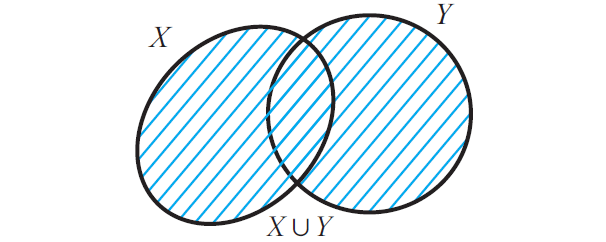
It is clear that X ⊆ X u Y and also Y ⊆ XuY.
Intersection
Let X and Y be two sets.
Now, we can define the following new set.
XnY = {z | z ∈ X and z ∈ Y}
(That is z must be in both X and Y)
XnY is read as 'X intersection Y'
Now that X n Y contains only those elements which belong to both X and Y and the Venn diagram given below illustrates this.
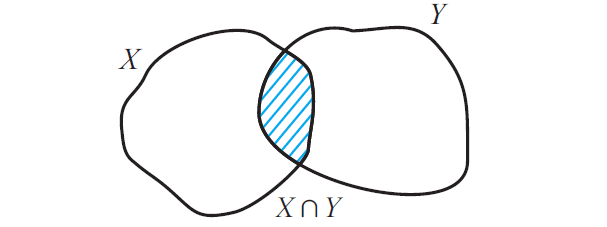
It is trivial that that X n Y ⊆ X and also XnY ⊆ Y.
Set difference
Let X and Y be two sets.
Now, we can define the following new set.
X\Y = {z | z ∈ X but z ∉ Y}
(That is z must be in X and must not be in Y)
X\Y is read as 'X difference Y'
Now that X\Y contains only elements of X which are not in Y and the Venn diagram given below illustrates this.
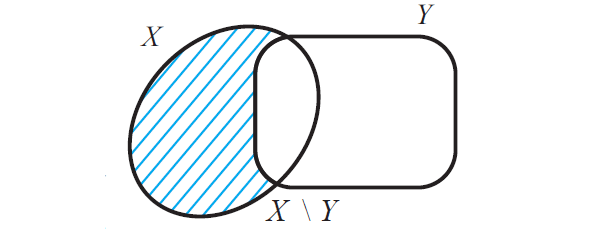
Some authors use A - B for A\B. We shall use the notation A\B which is widely used in mathematics for set difference.
Symmetric difference
Let X and Y be two sets.
Now, we can define the following new set.
XΔY = (X\Y) u (Y\X)
XΔY is read as 'X symmetric difference Y'
Now that XΔY contains all elements in XuY which are not in XnY and the Venn-diagram given below illustrates this.

Complement
If X ⊆ U, where U is a universal set, then U\X is called the compliment of X with respect to U. If underlying universal set is fixed, then we denote U\X by X' and it is called compliment of X.
X' = U\X
The difference set set A\B can also be viewed as the compliment of B with respect to A.
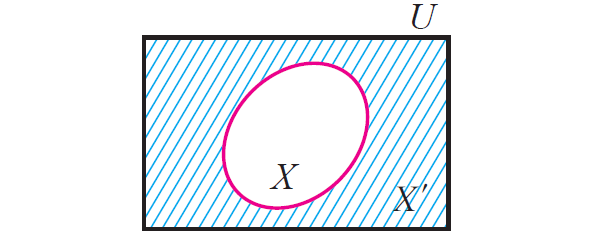
Disjoint sets
Two sets X and Y are said to be disjoint if they do not have any common element. That is, X and Y are disjoint if
XnY = ᵩ
It is clear that n(AuB) = n(A) + n(B), if A and B are disjoint finite set.

Problem 1 :
Let U = {1, 2, 3, 4, 5, 6, 7, 8}. Draw a Venn diagram to represent C = {2, 3, 7}
Solution :
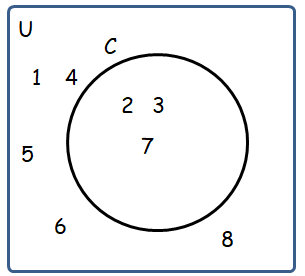
Set C has elements, C = {2, 3, 7} and C' = {1, 4, 5, 6, 8}
Problem 2 :
Let U = {1, 2, 3, 4, 5, 6, 7, 8}. Draw a Venn diagram to represent A = {1, 3, 4, 6}, B = {2, 3, 6, 8}
Solution :
Given sets are,
A = {1, 3, 4, 6}, B = {2, 3, 6, 8}
Common elements will be in the set A n B
= {3, 6}
Elements in the set A and B can be joined together in AUB.
Problem 3 :
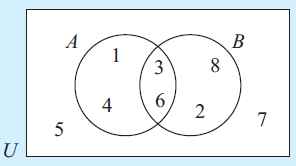
Let U = {1, 2, 3, 4, 5, 6}. Draw a Venn diagram to represent:
a) A = {2, 5}, B = {1, 2, 4, 5, 6}
Solution :
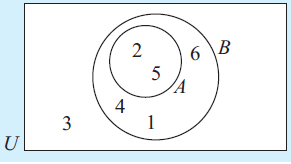
Problem 4 :
Let U = {1, 2, 3, 4, 5, 6}. Draw a Venn diagram to represent:
b A = {1, 3, 6}, B = {2, 4}
Solution :
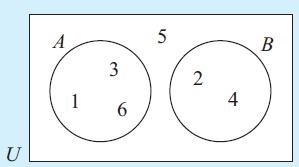
Problem 5 :
Shade the region of a Venn diagram representing:
a) in A and B
b) in A but not in B.
Solution :
a) in A and B
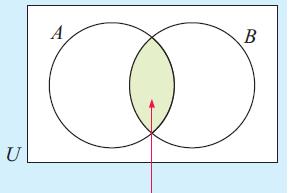
b) in A but not in B.
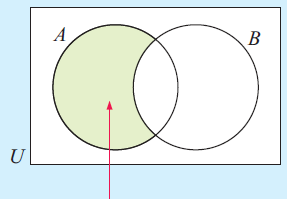
Problem 5 :
A group of 15 friends are discussing which foods they like. 10 of them like chocolate, 9 of them like ice cream, and 6 like both these foods.
a) Place this information on a Venn diagram.
b) How many people in the group like:
i) ice cream but not chocolate
ii) chocolate but not ice cream
iii) neither food
iv) chocolate or ice cream?
Solution :
a)
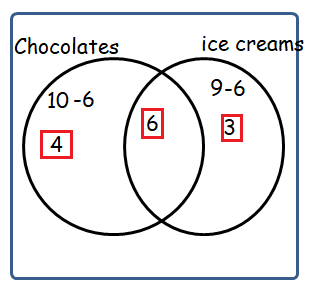
b)
i) Number ofpeople who do not like chocolate = 3
ii) Number of people who do not like ice cream = 4
iii) number of people atleast like one = 4 + 6 + 3
= 13
Total number of people = 15
iii) Number of people who like neither food = 15 - 13
= 2
iv) Number of people who like chocolate or ice cream = 13
Subscribe to our ▶️ YouTube channel 🔴 for the latest videos, updates, and tips.
Kindly mail your feedback to v4formath@gmail.com
We always appreciate your feedback.
About Us | Contact Us | Privacy Policy
©All rights reserved. onlinemath4all.com

Recent Articles
-
US Common Core K-12 Curricum Algebra Solving Simple Equations
Jan 07, 26 01:53 PM
US Common Core K-12 Curricum Algebra Solving Simple Equations -
10 Hard SAT Math Questions (Part - 4)
Jan 05, 26 06:56 PM
10 Hard SAT Math Questions (Part - 4) -
10 Hard SAT Math Questions (Part - 3)
Jan 05, 26 06:34 PM
10 Hard SAT Math Questions (Part - 3)

